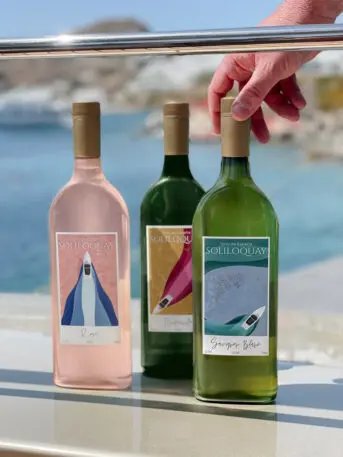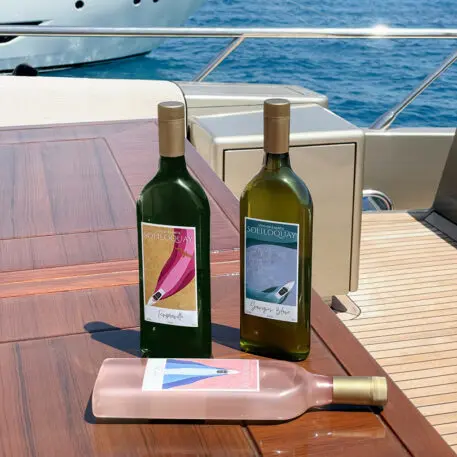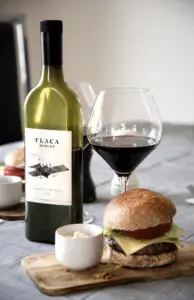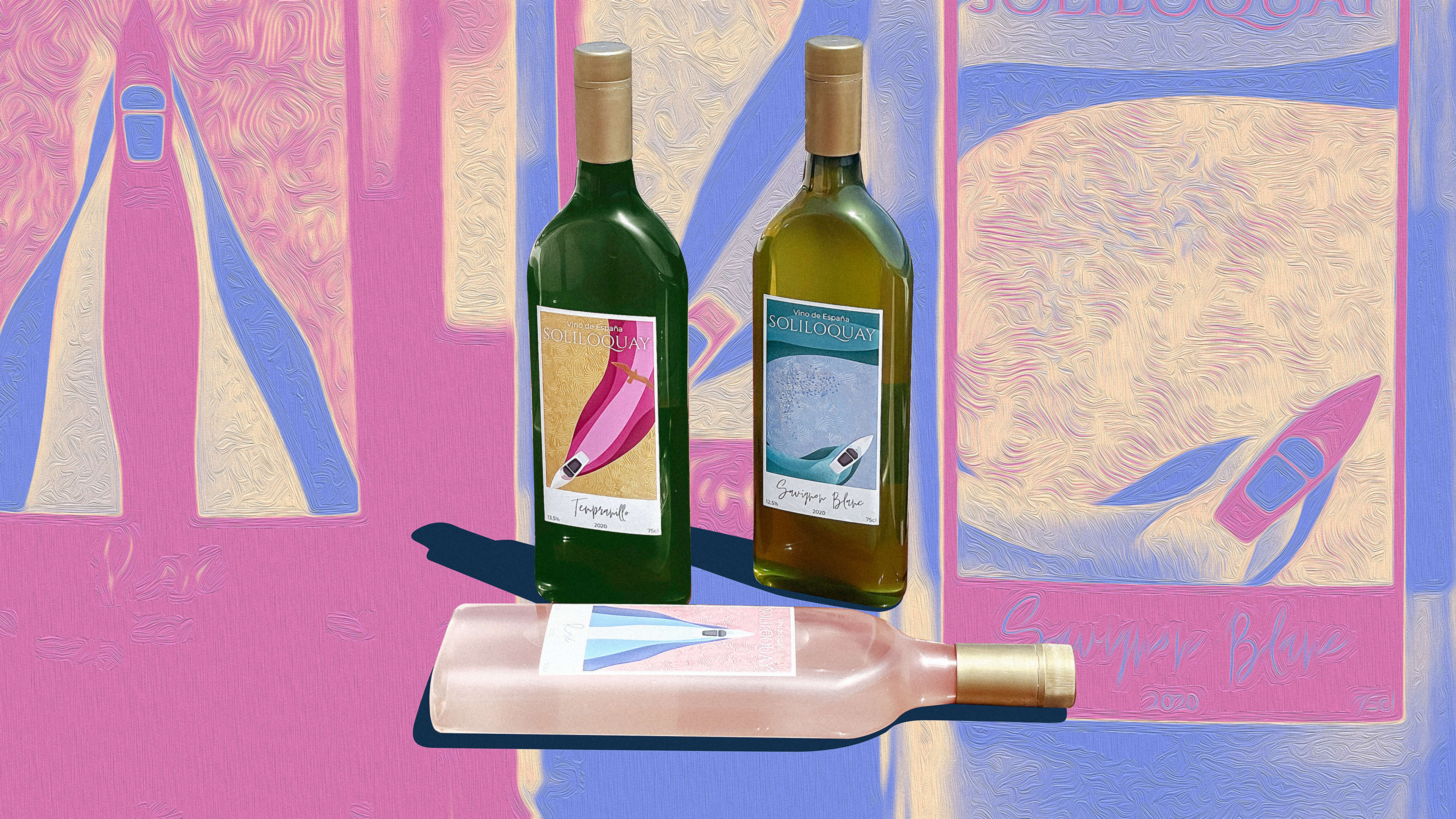Wine drinkers have become accustomed to seeing new packaging over recent years, whether it’s screw tops, cans, or boxes. This spring, another shape will hit the shelves—and it might take some getting used to.
The latest packaging innovation looks more like a flask, albeit an upscale one made of recycled plastic. Santiago Navarro, CEO and cofounder of London-based Garçon Wines, plans to launch his 100%-recycled PET flat bottles in the U.S. this spring with a brand called Packamama, a packaging alternative for the domestic wine industry. Packamama will also introduce a proprietary wine brand called Flatworks, created in partnership with Sonoma’s Ron Rubin Winery. The brand will launch with a Cabernet Sauvignon and Chardonnay, priced $15.99 each, with a retail presence in California and direct-to-consumer shipping in 35 states.

Packamama’s flat bottles aren’t the first attempt to address the problem. Over the last decade, many estates started making bottles lighter in an effort cut back on materials and shipping.
In 2015, California-based Jackson Family Wine converted their best-selling Kendall-Jackson and La Crema brands to 14-ounce bottles and immediately saw a 4% reduction in emissions. But executives were concerned about how consumers might perceive the change.
“We have a proprietary mold for Kendall-Jackson that my dad [Jess Jackson] actually created,” says Katie Jackson, SVP of corporate social responsibility. “We didn’t want to completely change the shape because it’s been something that customers associate with the brand since the beginning.”

Navarro wants to go further, and says the wine industry needs significant change rather than incremental innovation if it wants to combat climate change. To him, lighter bottles aren’t enough; it’s a minor tweak to an old idea. “A screw cap is a [significant] innovation,” says Navarro. The bottles are easier to open, the caps are intuitive to recycle, and the caps prevent “corked” wines. “That’s why screw caps are so successful, because they’ve unlocked so many extra benefits.”
By rethinking bottles altogether, from material to shape, Navarro says his bottles reduce CO2 emissions by 50% compared with standard glass bottles.

Navarro’s flat-pack bottles have already been successful in the U.K. and Australia. They were originally slated for a U.S. launch in February 2020, but COVID interrupted the expansion plans. He believes the U.S. market is especially open to change. One could point to the rising popularity of canned wine and boxed wine to support this notion. Canned wine sales rose 3,800% between 2007 and 2021; boxed wine sales had been rising for years, and surged during COVID lockdowns. Packamama will target “popular” wines (typically priced between $10-$15 a bottle) and “premium” wines (between $15 and $40), both of which are generally consumed shortly after purchase. This accounts for about 85% of global volume, according to Navarro, and since wine in PET packaging has a shelf life of up to two years, there’s a strong opportunity for the brand.
Some retailers also seem eager to serve as gateways to change.
“I will admit, bottles that don’t fit on my shelf are a pain, but I’ve also designed my shelves to handle most sizes and shapes,” says Kevin DeBernardi, general manager and buyer at VinVero wine shop in New York City, which sells about 5,400 cases of wine a year. “Bottle size has little impact on my decision-making when it comes to carrying a wine. I think more important today is the environmental impact of packaging.”
The topic of wine packaging is at an interesting juncture: Wineries recognize changes need to be made, but customers may not easily let go of the notion that hefty bottles equal quality. Consumer education will play a key role in the rollout of the new bottles; Packamama will feature sustainability messaging as to why recycled PET is the material of choice.
“The term ‘plastic’ is plastic’s biggest challenge, frankly, because it’s a simple term to define a large group of highly different and complex polymers,” says Navarro. “It’s like asking someone to make an informed purchase on a vehicle by saying they’re all called cars.”
Recognize your brand’s excellence by applying to this year’s Brands That Matter Awards before the early-rate deadline, May 3.
